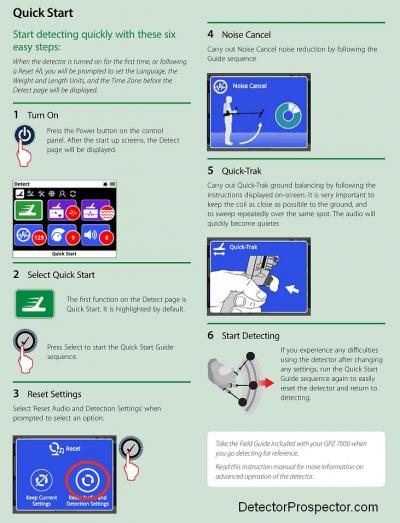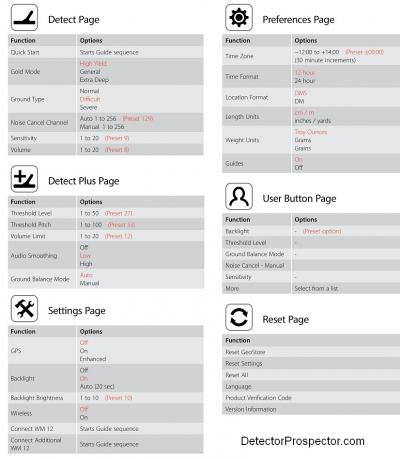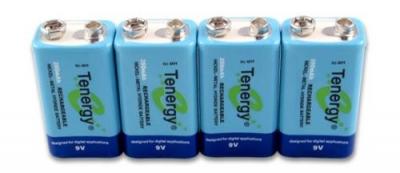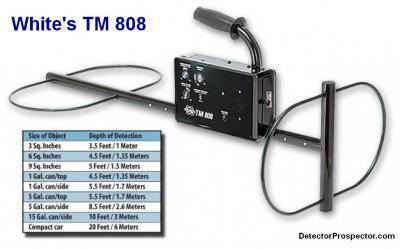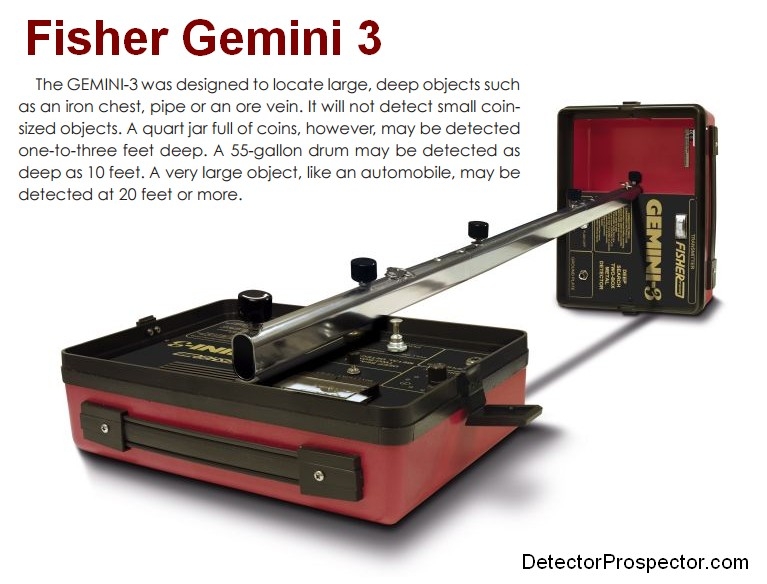-
Posts
19,761 -
Joined
Content Type
Forums
Detector Prospector Home
Detector Database
Downloads
Everything posted by Steve Herschbach
-
Well, I have the Gold Bug 2 and it is really in a separate category - it is not a multiuse detector. Incredibly hot on tiny gold, but lacking depth on larger nuggets in mineralized ground. But for what it does nothing replaces the Gold Bug 2. I also have a Racer and a FORS Gold and I can't for the life of me say one is better than the other. They are just different. People used to swinging a Minelab might just like the FORS more. The Racer is a more traditional setup. Because of the way they balance I like the Racer when running the small coil and FORS when running the big 17" coil. I am hoping the Gold Racer will be somewhat of a tie breaker, but the problem really is we do not know yet what it will do. You would hate to buy one of the others, then find out the Gold Racer was what you really wanted. I do know this. Last time out with the GPZ I got tired of digging junk at one point and wished I had a VLF along. Next outing the Racer goes just because it is such a great "grab and go" sort of machine. The FORS not so much.
-
The Makro Racer at $649 with 11" x 7" DD coil gives the Fisher Gold Bug Pro at $649 with 5" round DD coil a distinct run for the money. The Racer is actually being compared favorably to the more expensive Fisher F19 at $799. A good independent report at http://www.dankowskidetectors.com/discussions/read.php?2,79742 No word at all on the Gold Racer that I have heard.
-

ZED Settings For The Sake Of Discussion
Steve Herschbach replied to Condor's topic in Minelab Metal Detectors
Targets by my definition are metallic items and I would never want to ground balance over a metallic item. Hot rocks and mineralization are just that and the entire goal with a ground balancing detector is to ground balance them out. I will always attempt to use ground balance to solve ground issues first before going to a more aggressive (by way of ground handling) timing or gold mode. Whether doing a ground balance in all modes at the beginning of the day or individually as a mode is first activated I believe it is a good habit to always propery ground balance. I will let the machine decide what it needs to do at that point. I noted on other threads where people are concerned about losing accumulated tracking information from doing a reset or even just turning the detector off. I am the exact opposite. At the slightest sign of trouble I will do a reset and rebalance procedure to make sure I am dealing with fresh information applicable to my current circumstances. I always do a reset when moving to a new location. I am more concerned with keeping the ground balance running with minimum aggressiveness and do not want settings from bad ground to carry over into areas of milder ground. Going from mild ground to worse ground it would be less an issue. -
The Racer is a very high gain detector susceptible to overload signals. From Link deleted since Findmall Forum update broke all old links "The electronic gain of the RACER consists of 3 levels to eliminate the internal electromagnetic noise and to adjust the saturation level. The electronic gain change points correspond to levels 39 and 69 on the Gain setting. In case of saturation (overload), you may raise your search coil a bit or adjust the Gain to the lower electronic gain level. For example, in the All Metal and Two Tone modes, if the Gain is set to 70 or above and if saturation occurs, adjusting the Gain to 69 or 39 will minimize or eliminate the saturation. Similarly, if you experience saturation in the Three Tone mode, adjusting the Gain to 39 will be sufficient. Reducing the gain will not cause a dramatic decrease in depth."
-

DeLorme InReach Satellite Text Communicator
Steve Herschbach replied to Steve Herschbach's topic in Detector Prospector Forum
I did buy one but have not activated it yet. Got in the winter doldrums. I will be using it in the next month and will report back. -

ZED Settings For The Sake Of Discussion
Steve Herschbach replied to Condor's topic in Minelab Metal Detectors
If you change gold modes you need to ground balance again anyway. -

ZED Settings For The Sake Of Discussion
Steve Herschbach replied to Condor's topic in Minelab Metal Detectors
First thing I would do is hit the Quick Track button and see if I could balance them out. -

GPZ 7000 Audio Smoothing
Steve Herschbach replied to Steve Herschbach's topic in Minelab Metal Detectors
The GPZ has oodles of power in the stock settings and it is only the never ending quest for the perfect setting played out online that is making it seem difficult. Frankly, in my opinion too many new users are overdriving the machine too quickly. I ran mine at near default settings to make most of my finds and have not strayed very far from them even yet. If you perform the Quick Start you are basically good to go. The default settings are: Gold Mode - High Yield Ground Type - Difficult Ground Balance Mode - Auto Audio Smoothing - Low Sensitivity - 9 To show you how conservative I am so far the only real adjustments I have made are to generally run with Audio Smoothing Off. I will try Ground Type Normal if the ground appears mild enough to handle it, and go back to Difficult if the machine gets unstable. And I generally run Sensitivity between 9 and 12, with 12 being my most common setting. You can make the GPZ as simple or as difficult as you want it to be. I prefer simple. A lot of thought went into the default settings and in my opinion they are far closer to where you want to be than most people seem to think. Just my opinion. -

Aluminium Batteries - The Future?
Steve Herschbach replied to rumblefish's topic in Metal Detector Advice & Comparisons
More details here in the Stanford News http://news.stanford.edu/news/2015/march/aluminum-ion-battery-033115.html Looks like more work needed so nothing soon but new battery technology could do a lot to help with future metal detector applications. -

Tools - Not Toys
Steve Herschbach replied to Rick K - First Member's topic in Detector Prospector Forum
Cool, I figured out how to automatically embed Facebook video so added it to Rick's original post. -

9 Volt Rechargeable Battery
Steve Herschbach replied to sjmpainter's topic in Metal Detector Advice & Comparisons
Don't know what to tell you. I decided running at proper voltage was more important to me. The mAH rating being longer just gives you more running time between charges, and since we are talking rechargeables anyway that did not seem like a big deal to me. I used these in my Gold Bug Pro when I had it and it ran a long time but I charged again before the battery ran dead so have no idea how long they will run in hours. Be careful as some Li-Ion batteries are actually a bit oversize and will not fit in your detector! -
The Minelab GPZ 7000 audio Smoothing function was directly derived from the Stabilizer control used on the GPX series. From JP at http://www.detectorprospector.com/forum/topic/715-gold-i-found-in-victoria-with-the-gpz/?p=6424 "On the subject of Audio Smoothing: Off on the GPZ = 20 on the GPX 5000, Low equals 15 and High equals 10." JP at the link referenced obviously prefers Smoothing to be left off. Some people are experimenting with higher audio smoothing settings combined with either hotter Gold Mode settings or higher Sensitivity settings or both. I think this is a good thing so do not go thinking it is "wrong". There is no right or wrong per se, it is all about what works for each prospector and their personal tolerance for noise or the lack thereof. Experimentation is good. I thought it would be informative to copy what the GPZ manual (page 66) has to say about the Stabilizer control. Warning: the GPX Stabilizer control is backwards. The highest setting if 20 is the off position. Lower numbers increase smoothing. So the GPZ at off is same as GPX at 20 (off). Note that the GPZ High setting is the same as the GPX default setting of 10. The default for the GPZ 7000 is Low Smoothing which is the equivalent of a setting of 15 on the GPX. One final note. RX Gain as referred to on the GPX is the same as the Sensitivity control on the GPX. From the GPX manual: I guess I should say that my preferences tend to follow JPs - I run with audio Smoothing off under nearly all circumstances. But I wanted to make this post to create a thread on the subject as it is very clear people are having success with other ways of thinking and again, I like out of box thinking. Lunks settings at http://www.detectorprospector.com/forum/topic/830-lunks-zed-settings/ are at the other end of the spectrum. I also liked Jason's observation on the subject at http://www.detectorprospector.com/forum/topic/827-minelab-video-gpz-7000-ground-type/?p=8276
-
I think I have a better idea for you Fred. I had a screen protector for an Amazon Kindle I never used, the clear type that stick on the screen. They make them for cell phones, etc. I just cut it to fit, stuck it on, and now no worries. The protector will get scratched eventually but then can be peeled off and replaced. And they are cheap. The main thing is have the screen 100% clean before sticking the protector on. The tiniest dust will make a little bubble under the protector.
-

9 Volt Rechargeable Battery
Steve Herschbach replied to sjmpainter's topic in Metal Detector Advice & Comparisons
Well, I got these Tenergy NiMH rechargeable batteries and all I can say is they have worked for me. I use them in my Gold Bug 2 and Garrett pinpointer. -
I officially approve absolutely anything that involves prospectors helping prospectors - as long as it is legal! Any forum related resources I can make available I will.
-

Detector`s For Kids
Steve Herschbach replied to sjmpainter's topic in Metal Detector Advice & Comparisons
Minelab Go-Find 20 "Looks like they are not available yet. Anyone know the arrival date." From http://www.minelab.com/consumer/knowledge-base/news?article=264803 "The GO-FIND Series will be available at your local dealer from May, 2015 onwards." I think Minelab is going to score with kids with the Go-Find series. I have a ton of respect for the Tesoro Compadre but I can't see a kid getting too excited by a one knob detector with no screen. The Go-Find has an undeniable "cool" factor I think kids will like, and the versions that sport a cell phone app are pure brilliance for the same reason. That said the Garrett Ace 150 is a sweetie in a more traditional design. -

Advice Please On Treasure Hunting Detectors
Steve Herschbach replied to arpax's topic in Metal Detector Advice & Comparisons
I like that both Fisher and Whites quote depths on buried cars. Real common item. -

Learning How To Use LandMatters
Steve Herschbach replied to vanursepaul's topic in Detector Prospector Forum
Thanks Paul, very helpful! -

48 ZED Nuggets Now, But Who's Counting
Steve Herschbach replied to russ's topic in Detector Prospector Forum
Russ, nice gold but also a really great photo - well done! -

High-trash Area Prospecting VLF Or PI
Steve Herschbach replied to karathound's topic in Metal Detector Advice & Comparisons
"I want something light and easy to navigate with as a first pass, knowing that I am going to be in high-trash areas as a starting point. Once I locate a promising area, I can then switch over to a higher-power detector like the GPZ and work the area more thoroughly." Perfect! Some areas are just so laden with trash you need a way to figure out where to concentrate your efforts with a GPX or GPZ without digging a ton of junk. I think using a VLF to simply find a nugget and then switching to a PI and working from the nugget as a center point is a great strategy. If no more gold develops, back to the VLF until another nugget turns up, then back to the high power unit. Basically patch hunting in junk, using the VLF to find the indicator nugget, with the big guns for cleanup. Please do let us know how it works out. -

Minelab Video - GPZ 7000 Ground Type
Steve Herschbach replied to Steve Herschbach's topic in Minelab Metal Detectors
And I often seem overly critical or argumentative and for that I apologize! No apologies needed jasong, your posts and contributions are greatly appreciated. I just thought it interesting our two different perceptions and as my wife is fond of saying - perception is reality. You are spot on actually as if you look at the GPX 5000 you will see that people tended to settle into some mode somebody recommended and that was that. Fine Gold was a big offender in that regard. It is easy enough to do when you find something that seems to work. And if all a person does is hunt one particular area it can be the correct thing to do. However, if a person moves around a lot it is imperative to learn what the settings do and adjust for different conditions. If one setting worked everywhere we would not need the controls, just a power switch. The settings on the detector are just like a manual shift car with a gas pedal. You need to learn when to be in second at half throttle, third at one third throttle, and in overdrive at full throttle. My GPZ settings are meaningless unless you know the exact context in which they are being used. Yesterday I was in a fairly low mineral situation running in High Yield/Normal, Smoothing Off, and Gain 12. Unit was generally stable with a little ground feedback and as hot as a pistol on small stuff. I like the GPZ more and more the more I use it. My SDC is in danger of becoming an orphan. -

Advice Please On Treasure Hunting Detectors
Steve Herschbach replied to arpax's topic in Metal Detector Advice & Comparisons
A detector for finding single coins is different than a detector made to find a large buried cache. Many treasure hunters looking for large items have used detectors like the Fisher Gemini 3 or White's TM 808. These are deep seeking detectors made for finding large buried items at depth. Specialty pulse induction detectors with large coils are also popular. For information and reviews of standard detectors used for finding coin size and smaller targets at shallower depths visit https://www.detectorprospector.com/magazine/steves-guides/steve-guide-gold-nugget-detectors/ Fisher Gemini 3 For Prospecting Important note: The chart and depths quoted are based on optimistic low mineral conditions. Real life results will probably be less impressive. Note: Newer thread on subject here. -

Minelab Video - GPZ 7000 Ground Type
Steve Herschbach replied to Steve Herschbach's topic in Minelab Metal Detectors
"It seems like everyone is in a rut where we are stuck on no audio smoothing and Difficult, and I can't understand why." That's funny, I do not see everybody as being stuck on anything. Different forums? Somebody making a suggestion for settings and an assumption that is all they ever try or use? Seems like plenty of experimenting going on to me. The posts by Lunk and yourself prove it. As far as smoothing goes, that came from JPs general aversion to smoothing and others following suit. As I mentioned at http://www.detectorprospector.com/forum/topic/800-five-rp-bits-with-some-new-settings/?p=7794 there is always going to be a battle between sensitivity and stability depending on peoples personal desires and tolerance levels. I cannot tolerate totally silent detecting and there is a point where there is too much audio feedback. Where those two things balance is very much an individual thing. Some people can listen to a barrage of what I think is noise and hear a symphony instead. Some people really do want the machine to run smooth as butter with nary a variation until a target is heard. There are parallels between prospecting and hunting thick ferrous trash around old habitations. The best iron hunters prefer the detector to report everything and to listen for nuances in the signal. There is a real difference between blended and gated audio that few appreciate. Others want machines to shut the heck up on ferrous and just report non-ferrous. And some people want a prospecting detector to offer constant audio feedback on ground variations while also hearing the gold. Others want to hear just the gold. The bottom line as I see it is you have to find a level that makes your own personal detecting experience reasonably pleasant. I find the GPZ 7000 to be so powerful that it is pretty forgiving of settings within reason and will simply find gold if I get over it. -

One Brain Cell Working AKA Deus Chronicles
Steve Herschbach replied to goldbrick's topic in XP Metal Detectors
Excellent, we can compare notes on the Racer. Mine will be getting use nugget hunting soon. It is more than capable and I have just been too busy with other stuff so I used the Gold Racer as an excuse to sort of ignore the Racer. Chris and I were out exploring hydraulic pits the last few days (more hiking than detecting) and all I took was my GPZ. Yesterday I looked at Chris and swore I would never ever be caught out without a VLF handy ever again. I can tell you this. My Racer comes with gain set at 70. There are some kind of break points at 69 and 39 and so if you get into bad ground and lots of overloads dropping to 69 can do wonders. Do not overlook beach mode for dealing with bad ground either. I am still experimenting and comparing to FORS CoRe and FORS Gold and may have more to say later.

